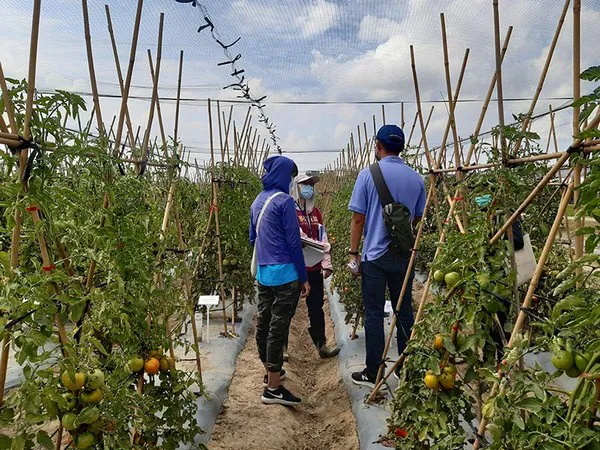Abiotic and biotic stresses severely damage the production and quality of Solanaceae vegetable crops in Taiwan. This project aims to enhance the production and quality of Solanaceae crops in Taiwan, and to strengthen the interaction and cooperation between WorldVeg and COA (Taiwan Council of Agriculture), Taiwan research institutes and seedling industries.

How will the project address the problem?
WorldVeg and partners in Taiwan will work on the following:
- Evaluate new tomato sources for heat related traits and fruit qualities; perform crosses among selected lines and MAGIC RILs to produce hybrids.
- Screen tomato accessions for Xanthomonas perforans resistance and lines for Tomato chlorosis virus resistance.
- Identify species of collected Alternaria sp. isolates; develop a screening protocol for tomato early blight resistance.
- Identify two biocontrol agents for managing tomato bacterial and fusarium wilt.
- Evaluate efficacy of selected biopesticides on tomato leaf miner, and develop a preliminary IPM strategy.
- Develop reciprocal F1 hybrid progeny: sweet pepper lines (with heat tolerance or Tomato mosaic virus resistance) X hot pepper lines (with resistance to bacterial wilt or Phytophthora capsici race 3), and characterize inheritance patterns of disease resistance.
- Discover characteristics of pepper bacterial wilt in Taiwan and establish a rapid screening system for resistance.
- Characterize pathogen population of Phytophthora blight in sweet pepper, and collect Polerovirus isolates for pure culture identification.
- Complete regeneration and morphological investigation of Solanaceae, Fabaceae and Cucurbitaceae accessions; use available data of Solanaceae crops to develop germplasm subsets.
What to expect:
- Solanaceae lines with high resistance to heat and multiple diseases are developed.
- Pepper accessions as rootstocks for sweet pepper grafting against bacterial wilt are identified.
- New biocontrol reagents to reduce the cost of managing insects and diseases are developed.
- Population and characterization of major pathogens in Taiwan and genetic analysis of disease resistance on Solanaceae lines are provided.
For more information:
World Vegetable Center
www.avrdc.org
